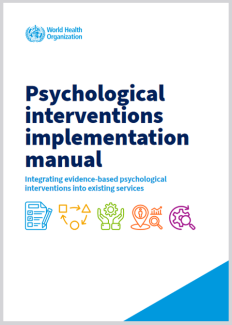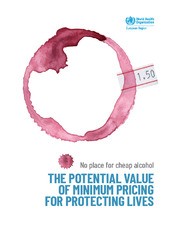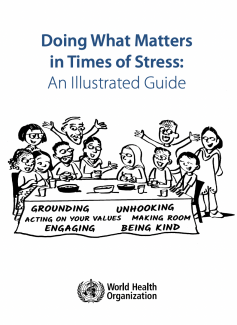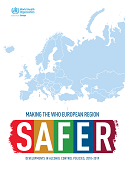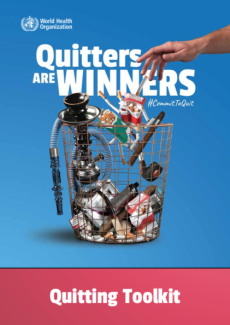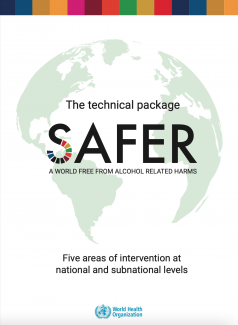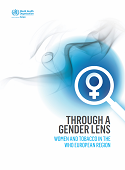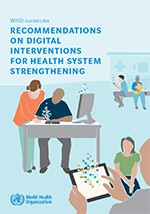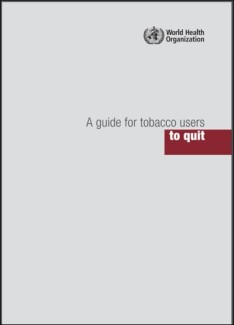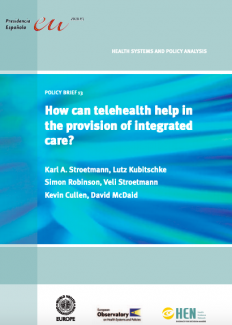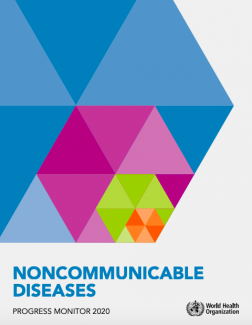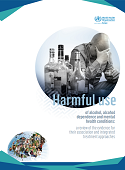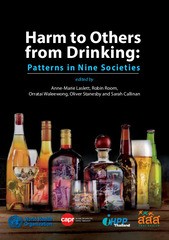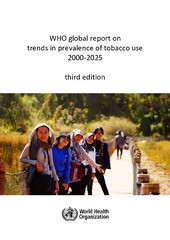Search
AUDIT : the Alcohol Use Disorders Identification Test : guidelines for use in primary health care
This manual introduces the AUDIT, the Alcohol Use Disorders Identification Test, and describes how to use it to identify persons with hazardous and harmful patterns of alcohol consumption. It is distributed with "Brief intervention for...
Integrated brief interventions for noncommunicable disease risk factors in primary care: the manual
Abstract
Brief interventions are recognized by WHO as an effective measure to help people quit tobacco, reduce or stop alcohol use and increase physical activity. They can also help to achieve and maintain healthy eating behaviours and...
No place for cheap alcohol: the potential value of minimum pricing for protecting lives
Overview
The WHO European Region has some of the highest levels of alcohol consumption and corresponding rates of alcohol-related harm in the world. Pricing policies and taxation are among the most effective measures that policy-makers...
Doing What Matters in Times of Stress: An Illustrated Guide
Doing What Matters in Times of Stress is a WHO stress management guide for coping with adversity. This illustrated guide supports implementation of WHO’s recommendation for stress management.
There are many causes of stress, including...
Psychological first aid: Facilitator’s manual for orienting field workers
This manual is designed to orient helpers to offer psychological first aid (PFA) to people following a serious crisis event. PFA involves humane, supportive and practical assistance for people who are distressed, in ways that respect their...
Making the European Region Safer: developments in alcohol control policies, 2010–2019 (2021)
This report presents the current status of alcohol consumption, alcohol-attributable harms and the implementation of alcohol control policies in the WHO European Region, using available data from 2010, 2016 and 2019.
A detailed overview is...
WHO Quitting Toolkit
Toolkit for delivering the 5A’s and 5R’s brief tobacco interventions in primary care
Making the European Region Safer: Developments in Alcohol Control Policies, 2010–2019
This report presents the current status of alcohol consumption, alcohol-attributable harms and the implementation of alcohol control policies in the WHO European Region, using available data from 2010, 2016 and 2019.
A detailed overview is...
Through a gender lens: women and tobacco in the WHO European Region
This report provides a brief summary of some of the challenges, old and new, that women and girls face in the context of the tobacco epidemic in the WHO European Region, outlining the gendered nature of tobacco use and exposure and how the...
WHO Guideline: Recommendations on Digital Interventions for Health System Strengthening
The key aim of this guideline is to present recommendations based on a critical evaluation of the evidence on emerging digital health interventions that are contributing to health system improvements, based on an assessment of the benefits...
A Guide for Tobacco Users to Quit
This self-help material was developed based on WHO Capacity Building Training Package 4 entitled “Strengthening health systems for treating tobacco dependence in primary care”. Its target audience are tobacco users. It aims to give advice...
How Can Telehealth Help in the Provision of Integrated Care?
The World Health Organisation defines telehealth as:
The use of telecommunications and virtual technology to deliver health care outside of traditional health-care facilities.
Well-designed telehealth schemes can improve health care...
Noncommunicable Disease Progress Monitor
Noncommunicable diseases are the leading cause of premature death globally.
Every year, 41 million people die from heart attacks, stroke, cancer, chronic respiratory diseases, diabetes or a mental disorder.
Despite the concerning trends...
Alcohol Use, Alcohol Dependence and Mental Health Conditions
Several key risk factors for noncommunicable diseases (NCDs) have been identified, including the harmful use of alcohol.
Half the world’s population drinks alcohol, and harmful alcohol use is the third leading cause of ill health and...
Harm to Others from Drinking: Patterns in Nine Societies
The adverse impact of alcohol consumption include the negative consequences of drinking on individuals other than the drinkers themselves, including both health and social problems. Alcohol’s harm to others (HTO) is an interactional...
WHO Global Report on Trends in Prevalence of Tobacco Use 2000-2025
Tobacco is the only legal drug that kills many of its users when used exactly as intended by manufacturers. WHO has estimated that tobacco use (smoking and smokeless) is currently responsible for the death of about six million people across...
The International Guidelines on Human Rights and Drug Policy
Alcohol Policy Scoring
Assessing the level of implementation of the WHO Global strategy to reduce the harmful use of alcohol in the Region of the Americas.
Abstract
[FOREWORD]. Monitoring progress is a key component whenever planning and committing to implement...
Share the Knowledge: ISSUP members can post in the Knowledge Share – Sign in or become a member
